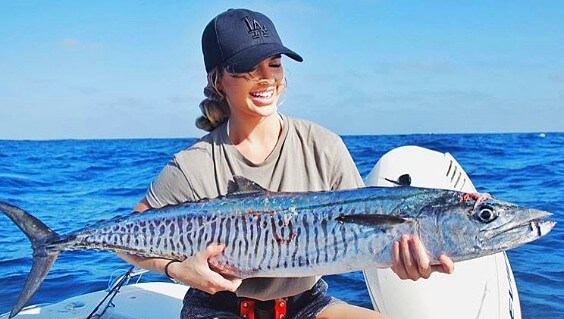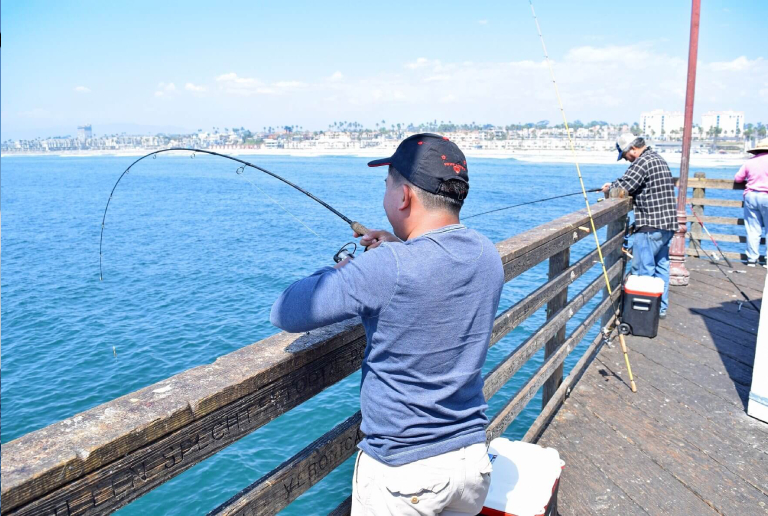
Guide for Catching Spanish Mackerel from the Shore
Spanish Mackerel is a type of fish that stays near to the coast in the Atlantic Ocean. They are frequently found between New York and Gulf of Mexico but will migrate to the southern coast of Florida in winter. Spanish Mackerel are fast swimmers and often travel together in large schools near the water surface. When feeding time, they will drive the baitfish to the surface which attracts the diving birds. So, you can’t get wrong with following the diving birds when you want to catch Spanish Mackerel.
Where to Find Spanish Mackerel
Spanish Mackerel is a migrating fish that will move from places to places depending on the weather. They usually appear in water with temperature around 70 degree. You can reference the temperature table at the NOAA website to learn about the water temperature of different US coastal waters at different dates. The changes of the water temperature is usually determined by the weather pattern so you will also want to check out the local fishing reports. You can get news on the local fishing reports in the forums and other websites.
The best time to catch Spanish Mackerel in North/South Carolina, and Georgia is from May to October. The Spanish Mackerel fishing season for Alabama, Mississippi, Texas, Louisiana, and St. Augustine in Florida starts from April to October. The fishing season for Naples and Stuart Beach in Florida extends from March to November. Beginning your fishing day at sunrise can give you more success because they are more likely to be in the shallow water around this time.
How to Find Spanish Mackerel
Spanish Mackerel is usually found swimming near the shore around 5 – 20 feet deep. If you don’t have a boat, you will have to go to a spot where you can target them in the deeper water. You can target on Spanish Mackerels from the beach, jetties and piers. Live baits work particularly well when you are fishing from a pier. You should get familiar with the rules of the pier before fishing there.
The pier may have rules on the number of rods you can bring, alcohol, and whether you need to get any license to fish at the beach. Jetties are built deeper into the water which means you don’t need to cast far. For this reason, you can use lighter baits like little glass minnow, feather jigs, and hair jig. Spanish Mackerels can also often be found along the actual coastlines, for example, the Pensacola Bay in Florida.
Targeting Spanish Mackerel When Fishing
Spanish Mackerel is a big fish but its favorite food is the small baitfish so you need to prepare small baits. Besides, you will also want to choose a bait that has similar color with the baitfish. You can use live baits such as mullets, cut squid, and live/dead shrimp for catching Spanish. To attract Spanish, you will have to retrieve the lure fast as they like to chase after the target at a high speed. Getting a high gear ratio tackle is a must for faster retrieval. If you can retrieve the lure fast, you will be able to make another cast back to the school before it moves to another spot. Conventional tackle works best if you are fishing from the piers.
To improve your chances of catching a mackerel, you can use a longer fly fishing rod. Longer rod like 9 feet rod allows you to make a longer cast. Heavy metal lure is useful for catching mackerels as it allows you to cast your line far and faster. Spanish mackerels can swim quite fast and that is why you should use a metal lure. The lure will be able to cast far allowing you to reach schools easily from your spot. Metal lure is more resistant to the teeth of Spanish Mackerel and can last for a long time. Casting spoons, and Gotcha plugs are some of the artificial baits that can help you get passed the sandbar.
Choosing the Leaders for Spanish Mackerel
Choosing the right leader line can make a lot of difference. You can use 30 – 50 pound monofilament for the leader. The leader should preferably be long up to 5 foot so that you can cut and retie several times. The line will become more and more frayed as you catch more fish so it is important to check the line for damage from time to time.
Braided line is not recommended as it can easily get noticed and bitten by the sharp teeth of Spanish. You also want to make sure that the leader is not too noticeable as it will make the Spanish avoid your bait. You will want to avoid using a flashy swivel for the leader as the fish is likely to strike it. It is recommended to use a small swivel with muted color such as matte black.
 Tuna Fishing Book
Tuna Fishing Book

 Penn Tuna Fishing Rod & Reel Combo
Penn Tuna Fishing Rod & Reel Combo Fishing Pliers and Knife Combo
Fishing Pliers and Knife Combo View Best Tuna Fishing Lures
View Best Tuna Fishing Lures Stainless Steel Fishing Leaders
Stainless Steel Fishing Leaders Saltwater Trolling Lure for Tuna
Saltwater Trolling Lure for Tuna